Sectoral Resection With Flap Plastic for Breast Cancer treatment in Germany
Treatment prices are regulated by national law of the corresponding countries, but can also include additional hospital coefficients. In order to receive the individual cost calculation, please send us the request and medical records.
Breast Cancer Treatment in Germany
- Diagnostics
- Reconstruction with an expander or allo prosthesis
- Diep-flap plastic reconstruction with own tissues
- Reconstruction with own tissue or implant after radical mastectomy
- Radical mastectomy
- Brachytherapy
- Chemotherapy
- Lumpectomy and lymphadenectomy by metastases to lymph nodes
- Radiotherapy
- Proton Therapy
- Embolization or chemoembolization
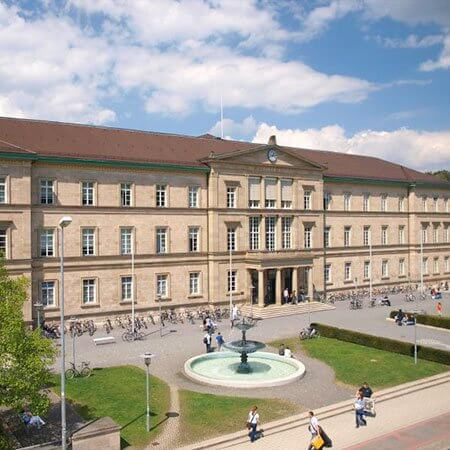
Department of Adult and Pediatric Gynecology, Mammology, Obstetrics
According to the Focus magazine, the Department of Adult and Pediatric Gynecology, Mammology, Obstetrics is included in the ranking of the top German departments specializing in obstetrics and breast cancer treatment! The department offers the full range of diagnostics and treatment of diseases of the female reproductive system, breast pathologies. Also, the specialists of the department provide a comprehensive management of pregnancy, childbirth and postpartum care for both mother and child. Key attention is paid to the treatment of female genital cancers, as well as breast cancer treatment. For this purpose, the department has all the modern therapeutic techniques, as well as its our own innovative developments by the department doctors.
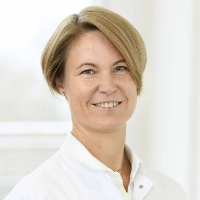





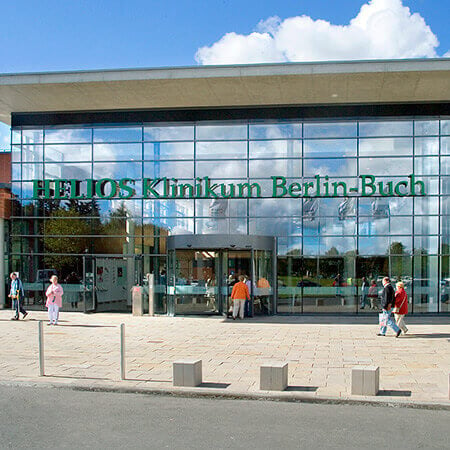
Department of Gynecology, Mammology and Obstetrics
The Department of Gynecology, Mammology and Obstetrics offers the full service range in these fields. The department specializes in the treatment of benign and malignant diseases of the female reproductive organs, breast, as well as comprehensive pregnancy management, childbirth and postpartum care. A treatment regimen is developed for each patient individually. Most surgical interventions can be performed using sparing surgical techniques. The department is certified by the German Cancer Society as the Center for Gynecologic Oncology, which indicates strict adherence to national treatment protocols and high quality of treatment.
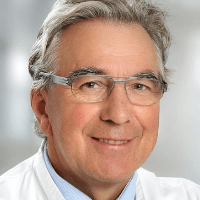

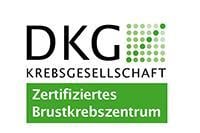
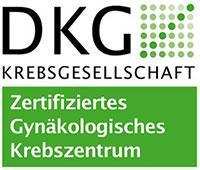


Department of Adult and Pediatric Gynecology, Mammology, Obstetrics
The Department of Adult and Pediatric Gynecology, Mammology, Obstetrics offers high-precision diagnostics and effective treatment of the full range of diseases of the female reproductive system and breast pathologies. The medical facility also employs a competent team of obstetricians, whose responsibilities include comprehensive management of pregnancy, childbirth, and postnatal care for mother and baby. More than 3,000 babies are born in the department's delivery rooms annually. The department cooperates closely with the UniFee Reproductive Medicine Center, which allows gynecologists to treat female infertility together with reproductive medicine specialists. The department's gynecologists focus on women with reproductive system cancers. The medical facility is certified by the German Cancer Society (DKG) as a specialized center. The specialists also successfully treat endometriosis, one of the most common benign gynecologic diseases. In the field of mammology, priority is given to the provision of medical care to women with breast cancer. Doctors perform comprehensive diagnostics, surgical and conservative treatment, and reconstructive plastic surgery after mastectomy. The department's specialists use state-of-the-art technical resources and their professional skills to provide each patient with high-quality medical service.






Few decades ago, most women with breast cancer underwent mastectomy, i.e. total breast removal. Today, this approach is still applied in many countries with a low level of medicine. In developed countries, mastectomy is used less, as doctors prefer organ-preserving operations. In combination with radiation therapy, sectoral resection demonstrates the same treatment results in stage 1-2 breast cancer as the total removal of the breast. At the same time, a woman can save her breast and restore it using plastic surgery.
What is sectoral resection
Sectoral resection is a surgical intervention that involves removing a sector of the breast. It is performed as a kind of breast cancer sparing treatment. The doctor removes 1/8, 1/6, or 1/4 of the breast (quadrantectomy). The surgeon excises the tumor along with 1-2 cm of normal tissue around it.
Sectoral resection is always supplemented by a biopsy of the lymph nodes. If a biopsy was not made, or the results of the study revealed metastases, axillary lymphadenectomy is performed (removal of 10 or more lymph nodes). Lymphadenectomy requires making an additional surgical incision.
After a sectoral resection, further treatment of breast cancer with radiation therapy is required. Sometimes it is supplemented by chemotherapy and hormone therapy.
Who is a candidate for a sectoral resection?
Most world’s countries have obligatory screening for breast cancer. Its implementation into clinical practice has led to early cancer detection. Almost half of malignant neoplasms of the mammary gland are detected at an early stage, when a tumor is up to 2 cm in diameter, without metastases in the lymph nodes.
Due to the early detection, organ-preserving interventions have become the main method of surgical treatment for breast cancer. Sectoral resection allows preserving a woman's breasts and performing breast reconstruction, restoring woman's femininity and attractiveness.
The sectoral resection can be performed instead of mastectomy in the following cases:
- Small size of the primary tumor; usually up to 2.5 cm, but sometimes up to 5 cm (in convenient for resection location of the tumor, large breast size)
- The woman wants to preserve the mammary gland
- The woman agrees to undergo radiation therapy after breast cancer surgery
- The are no contraindications to radiation therapy
- There is only one tumor (in presence of multiple neoplasms, mastectomy is indicated)
- The tumor is not aggressive (in aggressive cancers, such as inflammatory breast cancer, mastectomy is indicated)
- There are no mutations in genes that increase the risk of breast cancer recurrence
After breast cancer surgery, the edges of the removed tissue are examined under the microscope in order to find malignant cells. If malignant cells are found, the margins of the resection are considered "positive". In this case, a second more extensive surgery is performed. This can be a sectoral resection, performed with a large capture of healthy tissue, or a mastectomy.
After the surgery
Organ-preserving surgeries are usually minimally traumatic. A woman does not need to stay in the hospital for a long time. Often the patient does not even need to stay at the clinic overnight and returns home on the day of the operation.
The intervention does not affect bone structures, so recovery is relatively quick. In 2 weeks, a woman can return to her usual lifestyle.
The patient receives from the doctor detailed recommendation regarding the following:
- Wound care and dressing
- Caring for a drain if it is left in a wound (a tube from which fluid flows)
- Conditions when visiting the physician is required (redness, pain, suppuration)
- Hand exercises (rehabilitation)
- Hygiene rules
- Use of drugs (pain relievers, antibiotics)
- Possible symptoms that are normal after surgery and do not indicate development of complications
- Schedule of doctor appointments
- Further treatment of breast cancer after surgery
What is flap plastic
After the sectoral resection of the mammary gland, most women can undergo flap plastic. This is an operation to restore the shape and size of the breast. In most cases the doctor uses not silicone implants, but patient’s own tissues. Donor flaps are harvested from the thigh, buttocks, abdomen, back, etc. Donor flaps contain muscles, adipose tissue and skin.
There are many types of flap plastic. If you are undergoing treatment in Germany, you can be sure that:
- The doctor will choose the best option for breast reconstruction based on the location of the tumor, the shape and size of the breast, and the patient's wishes
- The risk of complications will be minimal
- There will be no large scars in the site of intervention (breast) and donor zone
- Wounds will heal normally due to the use of microsurgical techniques that ensure a good blood supply of the transferred flaps
- The flap will not be rejected due to medical errors
After the flap surgery, many women have even better breasts than they had before breast cancer treatment. If necessary, the doctor can tighten, increase or reduce the size of breasts. Sometimes surgery is performed simultaneously on both breasts.
Radiation therapy after the surgery
After a sectoral resection, all women without exception require radiation therapy. If a one-stage breast reconstruction is performed, then there is a risk of worsening of the aesthetic results of the plastic intervention.
Peculiarities of radiation therapy after organ-preserving interventions include the following:
- Reduces the risk of local recurrence to 2-3%, therefore radiation therapy is indicated for all women.
- It is carried out only when the surgical wound is healed completely. If a woman is receiving chemotherapy, then radiation therapy starts not earlier than 3-4 weeks after the course completion.
- It can cause skin pigmentation, fibrotic changes in the mammary gland and its thickening or even deformation.
- The most severe aesthetic defects occur if breast reconstruction was performed using implants.
- New methods of irradiation are more precise, therefore they are less likely to cause complications.
Some women want to have breast reconstruction immediately during the surgery to remove the tumor. The advantages of this approach include performing only one operation instead of two, lower risk of complications, better psycho-emotional state of the woman, preservation of the inframammary sulcus and the lateral and medial edges of the skin pocket of the mammary gland.
After a sectoral resection, a one-stage reconstruction is particularly effective. Usually, with this type of surgery doctors do not use implants and perform flap plastic. Results of the flap plastic with the woman’s own tissues are less affected by the subsequent radiation therapy compared to the results of using silicone implants.
A two-stage operation is also possible. First, the doctor removes the tumor, and a few months later performs a second surgery. The advantages of this approach are that radiation therapy is already behind at the time of performing reconstructive surgery, so radiation cannot affect the aesthetic results of plastic surgery.
Why is it better to undergo treatment of breast cancer in Germany
Breast cancer in Germany is treated by doctors who are respected all over the world. They work in modern, well-equipped hospitals with high levels of medicine. German specialists not only cure breast cancer, but also do it with minimal health risks and good aesthetic results.
Main benefits of treatment of breast cancer in Germany include the following.
Precise diagnostics. Before treatment of breast cancer in Germany, you will be examined to see if it is possible to perform a sectoral breast resection. The doctor will receive information about the size, location and the type of tumor, the presence of receptors to hormones and mutations in genes.
Organ-preserving operations. In the vast majority of cases, breast cancer in Germany is treated with organ-preserving surgery, not with mastectomy.
Sparing treatment. During the operation, a sentinel lymph node biopsy is performed. In some cases it avoids lymph node dissection (removal of numerous lymph nodes for histological examination).
High-quality breast reconstruction. Flap plastic can be performed immediately or in several months after the first surgery. German plastic surgeons use microsurgical techniques to achieve the best aesthetic result with a low risk of complications.
Combined breast cancer treatment. In Germany, surgical treatment of breast cancer is combined with radiation therapy, chemotherapy and hormonal therapy. In German clinics, the latest linear accelerators are used, which direct beams to the target area from different angles. They allow for safe treatment with minimal risk of complications development or affecting the results of breast reconstruction.
Affordable cost of treatment. Prices for treatment in Germany are lower than in most developed countries. Although prices are higher than in developing countries, German clinics demonstrate one of the best quality-cost ratios in the world. Cost of treatment depends on the level of the hospital, type of the surgery and other factors.
Treatment of breast cancer in Germany with Booking Health
If you are diagnosed with breast cancer, you can undergo treatment in Germany. Use the Booking Health service to find the information about the German medicine and leading hospitals, doctors, available breast cancer treatment methods, and choose the most suitable type of the program. In addition, you can compare the cost of treatment in different hospitals and book medical services in the hospital that offers affordable prices.
You can contact the University Hospitals Ulm, Tübingen, Charite or other TOP hospitals. The medical tourism operator Booking Health will arrange a trip to one of the leading German hospitals. Services and benefits of Booking Health include:
- You will receive a list of recommended German hospitals, which will be compiled on the basis of information about the effectiveness and safety of breast cancer treatment, the availability of innovative techniques and procedures, etc.
- Reducing the waiting time for undergoing treatment of breast cancer in Germany and making an appointment at a convenient date
- Reducing the cost of breast cancer treatment in Germany; prices are more affordable due to the exclusion of additional coefficients for foreign patients
- Reliable information about your expenses, the cost of treatment and individual medical procedures, funds remaining in the account
- Elaboration of the medical program without the need to repeat previous examinations
- Communication with the hospital after the completion of breast cancer treatment in Germany
- Purchase and shipping of medicines
- Organization of additional diagnostics or treatment in German clinics
Booking Health specialists provide quality services. We will book a hotel and airline tickets for you, organize a transfer from the airport to the hospital and back.

